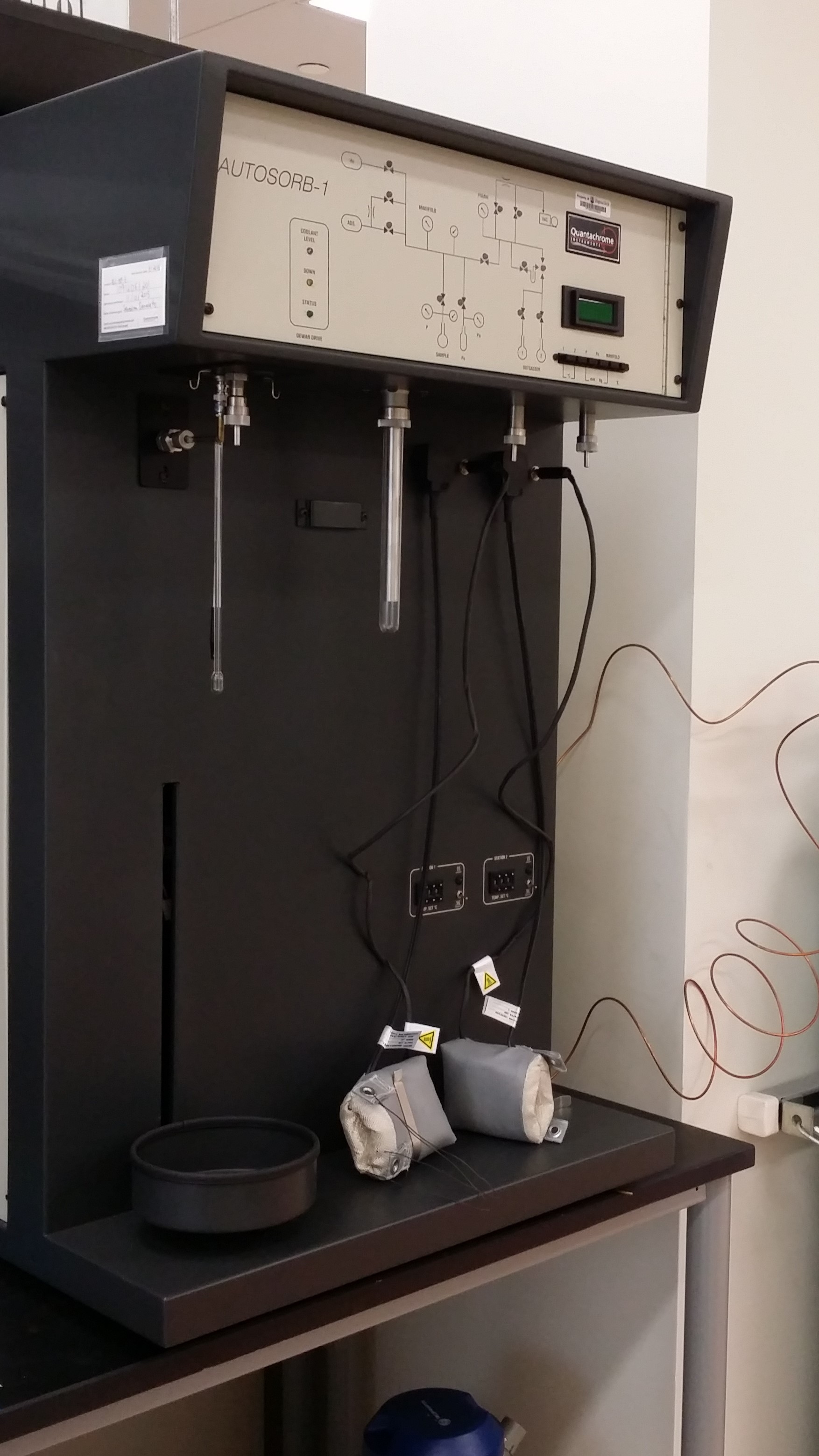BET (Brunauer–Emmett–Teller)

Brunauer–Emmett–Teller (BET) theory is used to measure the surface area of solid or porous materials. It gives important information on their physical structure as the area of a material’s surface affects how that solid will interact with its environment. Many properties such as dissolution rates, catalytic activity, moisture retention, and shelf life are often correlated to a material’s surface area. Critical to the design and manufacture of solids, surface area analysis is one of the most widely used methods in material characterization.
To determine the surface area, the solid sample is cooled, under vacuum, to cryogenic temperature (using liquid nitrogen). Nitrogen gas (as a typical adsorbate) is dosed to the solid sample (adsorbent) in controlled increments. After each dose of nitrogen gas, the relative pressure (P/P0) is allowed to equilibrate, and the weight (W) of nitrogen adsorbed is determined. The BET equation strictly describes a linear plot of 1/((P0/P)-1) vs. P/P0 which for most solids, using nitrogen as the adsorbate, is restricted to a limited region of the adsorption isotherm, usually in the P/P0 range of 0.05 to 0.35. From this plot the weight of nitrogen (Wm) constituting a monolayer of surface coverage is determined. The total surface area of the sample can be calculated from the slope and intercept of the BET plot using the BET equation and the known molecular cross-sectional area of the nitrogen molecule.
1/(W((P0/P-1)) = 1/(WmC) + ((C-1)/(WmC))(P/P0)
The term C, the BET C constant, is related to the energy of adsorption in the first adsorbed layer and consequently its value is an indication of the magnitude of the adsorbent/adsorbate interactions.
To determine the pore volume and pore size distribution, the gas pressure is increased further incrementally until all pores are filled with nitrogen molecules. Next, the gas pressure is reduced incrementally, evaporating the condensed nitrogen gas from the system. Evaluation of the adsorption and desorption isotherms reveals information about the pore volume and pores size distribution.
APPLICATIONS
- Surface area analysis of solid materials (such as carbon black, catalysts, batteries and ceramics)
- Simultaneous acquisition of surface area and pore size data
- Non-destructive method
LIMITATIONS
- Closed pores are not accessible via the material surface. Therefore, gas adsorption cannot be used for their assessment.
Rod, K. A., Smith, A. P., Leng, W., Colby, S., Kukkadapu, R. K., Bowden, M., Qafoku, O., Um, W., Hochella, M. F., Jr., Bailey, V. L. and Renslow, R. S. (2020). Water-dispersible nanocolloids and higher temperatures promote the release of carbon from riparian soil. Vadose Zone Journal, 19(1), e20077. https://doi.org/10.1002/vzj2.20077


